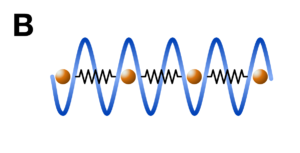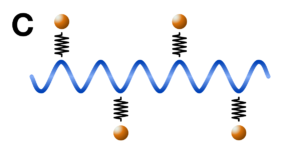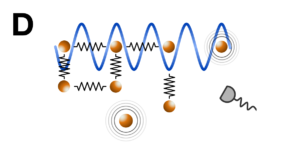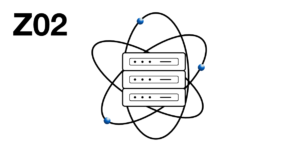Research
Summary of the research program
The central scientific aim of the TRR 306 QuCoLiMa (Quantum Cooperativity of Light and Matter) is to explore the distinctive traits of quantum cooperativity within a large variety of quantum platforms at the intersection of quantum optics and condensed matter, entering the regime of many-body physics of quantum cooperative light-matter.
Structure of the TRR 306 QuCoLiMa
Quantum cooperativity in light-matter systems comprises the collective response of matter, the collective emission of light, as well as the collective dynamics of light and matter. It can be established between individual entities of matter, between collective degrees of freedom, or between both. To identify the foundational principles of quantum cooperative behavior, a conceptual effort is required. Accordingly, we structure the research projects of the TRR 306 into the following research areas.
Research Area A: Quantum cooperativity induced by measurement processes
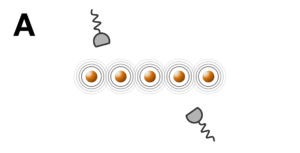
Summary of the area
The common denominator of all projects in area A is to understand and characterize the role of the quantum measurement in determining quantum cooperative dynamics. At its core is the investigation of how measurement and measurement back action establish quantum correlations, and how the emerging correlated states are robust against perturbations by the environment. The range of quantum platforms employed for the experiments in area A display a rich diversity, i.e., trapped ions, color centers in diamond, organic molecules, coherent electrons, spin ensembles and x-ray photons.
Projects
- A01 – Cooperative light emission and spatio-temporal photon correlations from trapped ion arrays
- A02 – Generation of photonic cluster states from color center-cavity systems
- A03 – Correlated x-ray photons for incoherent diffraction imaging
- A04 – Spatio-temporal correlations of electrons emitted from femtosecond laserdriven needle sources
- A05 – Cooperative effects of a defined number of organic molecules embedded in a dielectric antenna
- A06 – Tailor-made beyond-one-excitation quantum states for quantum information and communication
Research Area B: Quantum cooperativity of collective degrees of freedom
Summary of the area
Area B aims at characterizing quantum cooperative dynamics of the collective degrees of freedom in mesoscopic systems. The aim is to push the limits of quantum cooperativity to the mesoscopic scale. The five projects conforming this area utilize different collective excitations across a wide range of different parameters. They include the dynamics of optomechanical collective modes of cold atomic ensembles, the properties of transport in crystals of trapped ions and in the presence of quantum defects, the controlled interaction of light with mechanical or magnetic degrees of freedom in nanostructured and levitated solid state systems.
Projects
- B01 – Collective quantum dynamics of structural- and spin-defects in ion crystals
- B02 – Levitated ferrimagnetic particles in hollow-core photonic crystal fibres
- B03 – Point defects in silicon carbide: Towards a platform for the coupling of light, spin and mechanics
- B04 – Opto-mechanical lasing mechanisms in cold atoms
- B05 – Optomagnomechanical Arrays
Research Area C: Quantum cooperativity induced by interactions
Summary of the area
Research Area C embraces projects where the interactions between the individual constituents are engineered. This includes the exchange of photons and a direct matter-matter coupling by quasi static electric and/or magnetic interactions. The cooperative response is then observed in the spatiotemporal structure of the emitted electromagnetic radiation. The corresponding signatures of cooperative behavior are the observation of super- and subradiant emission, the onset of spatio-temporal photon correlations including the emission of non-classical light. Research Area C investigates furthermore the impact of different dimensionalities, geometries, in the presence of disorder, and of the boundary conditions on the cooperative behavior of its platforms. In particular, structuring of media, control of thermal fluctuations and control of the coupling to the environment allows for a detailed analysis of the impact of noise, fluctuations, and dissipation on the coopertive response of the systems.
Projects
- C01 – One-dimensional photon-mediated cooperativity of quantum emitters
- C02 – Light-induced correlations in dense atomic media
- C03 – Mechanical and chemical control of single and multiphoton emission
- C04 – X-ray Photonic Structures for Control of Cooperative Emission from Resonant Nuclei
- C05 – Quantum cooperative helical metafilms for producing nonclassical light
Research Area D: Pushing the limits of quantum cooperativity
Summary of the area
The projects of Area D target to identify the foundational principles of quantum cooperative behavior. The purpose is to set the ground for a comprehensive theory that will permit to define what is quantum cooperativity in its generality, when a physical system can exhibit quantum cooperativity, how cooperativity can be designed, and which experimental setups are most promising for observing quantum cooperative behavior at the mesoscopic scale. The quantum cooperative dynamics, which are the platforms of these theoretical studies include superradiance, quantum synchronization, and quantum critical behavior in driven-dissipative systems. Projects in area D serve as pathfinder beyond the first funding period, both for exploring future experimental situations and setups, where novel cooperative effects may be prepared and studied, but also for guiding the eye for future theory projects and a more complete embedding of cooperativity in the framework of complex open manybody systems.
Projects
- D01 – Cooperative effects in coupled quantum emitter systems
- D02 – Spatio-temporal structures in interacting spin systems
- D03 – Competing interactions in strongly correlated light-matter assemblies
- D04 – Synchronising quantum spins with long-range dissipation
- D05 – Quantum Cooperativity and Synchronization
- D06 – Entangling collective behavior of quantum materials and quantum light

